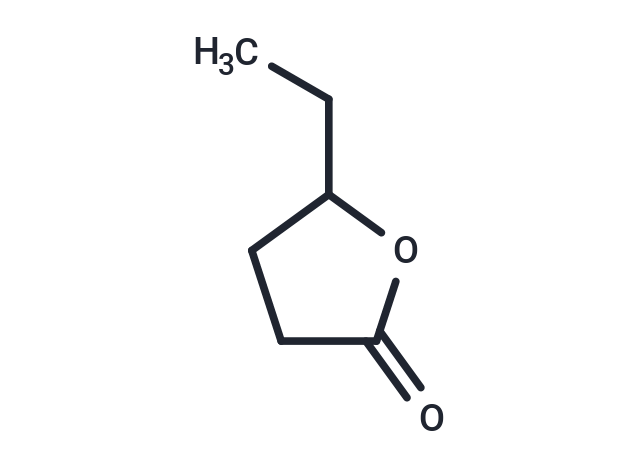- Remove All
 Your shopping cart is currently empty
Your shopping cart is currently empty
γ-Hexalactone
γ-Hexalactone (γ-caprolactone) belongs to the class of organic compounds known as gamma butyrolactones. Gamma butyrolactones are compounds containing a gamma butyrolactone moiety, which consists of an aliphatic five-member ring with four carbon atoms, one oxygen atom, and bears a ketone group on the carbon adjacent to the oxygen atom. Thus, Gamma-caprolactone is considered to be a fatty ester lipid molecule. Gamma-Caprolactone is a very hydrophobic molecule, practically insoluble (in water), and relatively neutral. Gamma-Caprolactone exists in all eukaryotes, ranging from yeast to humans. Outside of the human body, Gamma-caprolactone has been detected, but not quantified in, several different foods, such as potato, cereals and cereal products, pomes, alcoholic beverages, and fruits. This could make Gamma-caprolactone a potential biomarker for the consumption of these foods. 4-hydroxy-Hexanoic acid gamma-lactone is occasionally found as a volatile component of human urine. In some cases differences up to an order of magnitude are observed. 4-hydroxy-Hexanoic acid gamma-lactone has been found in the polar fraction of human blood. Biological fluids such as blood and urine have been shown to contain a large number of components, some of them volatiles (low boiling point) apparently present in all individuals, while others such are much more variable. Although some of these changes may have dietary origins, others seem to be characteristic of the individual.

γ-Hexalactone
| Pack Size | Price | Availability | Quantity |
|---|---|---|---|
| 1 g | $30 | In Stock | |
| 1 mL x 10 mM (in DMSO) | $29 | In Stock |
Product Introduction
| Description | γ-Hexalactone (γ-caprolactone) belongs to the class of organic compounds known as gamma butyrolactones. Gamma butyrolactones are compounds containing a gamma butyrolactone moiety, which consists of an aliphatic five-member ring with four carbon atoms, one oxygen atom, and bears a ketone group on the carbon adjacent to the oxygen atom. Thus, Gamma-caprolactone is considered to be a fatty ester lipid molecule. Gamma-Caprolactone is a very hydrophobic molecule, practically insoluble (in water), and relatively neutral. Gamma-Caprolactone exists in all eukaryotes, ranging from yeast to humans. Outside of the human body, Gamma-caprolactone has been detected, but not quantified in, several different foods, such as potato, cereals and cereal products, pomes, alcoholic beverages, and fruits. This could make Gamma-caprolactone a potential biomarker for the consumption of these foods. 4-hydroxy-Hexanoic acid gamma-lactone is occasionally found as a volatile component of human urine. In some cases differences up to an order of magnitude are observed. 4-hydroxy-Hexanoic acid gamma-lactone has been found in the polar fraction of human blood. Biological fluids such as blood and urine have been shown to contain a large number of components, some of them volatiles (low boiling point) apparently present in all individuals, while others such are much more variable. Although some of these changes may have dietary origins, others seem to be characteristic of the individual. |
| Alias | γ-caprolactone |
| Molecular Weight | 114.14 |
| Formula | C6H10O2 |
| Cas No. | 695-06-7 |
| Smiles | C(C)C1OC(=O)CC1 |
| Relative Density. | 1.023 |
| Storage | Powder: -20°C for 3 years | In solvent: -80°C for 1 year | Shipping with blue ice. | |||||||||||||||||||||||||||||||||||
| Solubility Information | DMSO: 30 mg/mL (262.83 mM) | |||||||||||||||||||||||||||||||||||
Solution Preparation Table | ||||||||||||||||||||||||||||||||||||
DMSO
| ||||||||||||||||||||||||||||||||||||
Calculator
In Vivo Formulation Calculator (Clear solution)
Dose Conversion
Tech Support
Keywords

Copyright © 2015-2024 TargetMol Chemicals Inc. All Rights Reserved.



